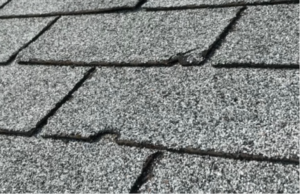Home remodeling projects are always exciting; especially when they involve taking down walls. There is, however, an element of risk with DIY wall removal.
What do I mean by risk? Well, if the wrong wall is removed, you could have serious settlement, structural issues or in severe situations, a full or partial home collapse. Yikes! This is nothing to mess with.

A simple way to cover you bases is to hire a structural engineer to determine load bearing walls prior to wall removal. If you want to know more about this process, click here.
Although we always recommend that you hire a professional to check for load bearing walls, there are some “clues” homeowners can use to tell which walls may or may not be load bearing in their building.
Having some background on the structural system in your home can make planning your remodel a bit easier.
We will walk you through what a load bearing wall is, how to tell which walls are load bearing in your home, how to go about removing a load bearing wall, and what a project like this may cost.
Let’s dive in.
What is a load-bearing wall:
Before you can determine where load bearing walls are located in your home, you need to understand the difference between a load bearing wall and a non-load bearing wall.
Load bearing walls have the very important job of transferring weight from the roof down to the soils. What does this mean? Well, in a sense, they hold the weight of the floors or roof above.
Since these walls are strategically placed in a floor plan by engineers, they cannot be removed without a structural replacement such as a beam and post. Failure to follow proper procedures could lead to serious structural damage to your home.
Conversely, a non-load bearing wall separates rooms in the house but does not bear any weight from the above floors or roof. It can be removed without needing reinforcement support.
Click here to learn more about the anatomy of a load bearing wall.
Quick “hints” that suggest your wall is Load Bearing:
It’s in the joists:
First off, let’s define what a joist is. A joist is a horizontal structural member, running across an open space, that is used to transfer loads to vertical members, typically, floors & ceilings. See the photo below.
The direction of the joists above your wall can be indicative of whether the wall is load bearing or not. Many times, if the joists run perpendicular to the wall, it is load bearing. This is not always the case, but is a good starting point.
Look at the photo below. Notice how the joists above the wall run perpendicular to the wall itself. On top of this, some of the joists actually end on the wall. This is a sure sign that this wall is structural (load bearing).
Most times, if the joists run parallel to the wall, the wall is non-load bearing.
Using House Dimensions:
Sometimes, you cannot actually see your joists. If you don’t want to rip drywall up, you can get a pretty good idea of which way the joists run simply by looking at the dimensions of the house. Typically, the joists will span the shortest distance.
Look at the photo below.
Notice how the joists are being installed horizontally across the shortest span of the room instead of longitudinally across the longest part of the room. Well, if this house was finished, you obviously couldn’t see the actual joists. However, you could infer that a wall running horizontally would be non-load bearing because the joists would be running parallel to the wall (not perpendicular).
Again, keep in mind that it is important to have a structural engineer verify your prediction before removing a wall. It is not safe to simply assume the wall is non-load bearing because you’re pretty sure the joists run a certain direction.
Gable Roof:
Another “quick trick” you can use to get an idea of what walls are load bearing is to go outside and look at your roof. If you have a gable roof with an internal wall running all the way up to the peak , you can probably make some assumptions.
But, first we should define what a gable roof is. A gable roof consists of two sloping roof sections extending in opposite directions that meet to form a roof ridge. See the photo below.

If you have a gable roof like this, often times the ceiling joists will run perpendicular to the center wall. See the photo below.
Knowing which way the ceiling joists go is very useful information. One reason is that, typically, the main structural beam of the house will run perpendicular to the ceiling joists.
Source
Exterior walls:
Most exterior walls are load bearing, but not all. It all comes down to where the roof trusses/rafters and floor joists/trusses are bearing. Long skinny homes may only have two exterior load bearing walls. To learn more about this, click here.
More extensive ways to tell if your wall is load bearing:
The basement:
Look for the main structural beam: The main structural beam is the primary beam in the home responsible for holding up other smaller beams and other structural components. It’s always easier to find a home’s structural beam/s when the basement is unfinished versus when it is finished. This is because the beams and joists will typically be exposed.
Look for a metal I-beam or multi-board wood beam that spans the basement. If you can see the joists, they will be running perpendicular to the beam, indicating that it is carrying significant loads in the home. Any walls directly above those beams are probably load bearing. This is also true for walls directly above each other on different floors.
Finished basements may have beams or poles that are hidden. If you see things like the following photos, you can infer that a load bearing beam is being concealed for aesthetic reasons.
Remember, walls on top of a structural beam are most likely load bearing.
Source
Check the Attic:
Rafters and truss systems: We recommend checking out your attic to gain some insight into your home’s structural system and load bearing walls. Rafters and trusses can dictate how loads are distributed within a home.
For instance, if you notice braces bearing down onto walls or or ceiling joists stopping and starting over a wall, it’s highly likely those walls are load bearing.
The photo below shows both of the scenarios mentioned above indicating that the wall below (depicted in orange) is load bearing.
Can you imagine what would happen if this wall was removed?
Source
Now that you have determined whether or not your wall is a load bearing wall, what’s next?
Open floor plans are “all the rage” right now. If all that stands between you and your open floor plan is a load bearing wall, do not fret.
It’s likely that the wall can be taken down and replaced with an equivalent support system such as a beam and post. You will need your structural engineer to design this plan for you.
Every structural engineering firm is different, so be sure to clarify what services you will be getting for your fee.
Does the fee include: an assessment, a report, structural drawings, and a scope of work (including directions on how to build temporary supports during wall removal)?
Most structural engineering firms work by the hour. So, it may be most advantageous for you to skip certain options such as obtaining a structural drawing for a simple project. Structural drawings are essential in some scenarios but perhaps could rack up a larger bill than necessary in others.
So, how do you install a support system capable of replacing the load bearing wall?
As we stated above, you need to hire a structural engineer. Many residential structural engineering firms offer load bearing wall inspections. An inspection will typically include a full examination of the home to determine if the desired walls are load bearing.
A report is usually generated to show which walls are load bearing, which walls are non-load bearing, and may include a scope of work depicting what to do if you want to remove one of the load bearing walls. This report can help you obtain a building permit for your remodel and also provide your contractor with the steps needed to install an equivalent support system.
What do we mean by equivalent support system?
Well, you can’t just take a load bearing wall down. You must replace the wall with a system capable of carrying the same load (or more depending on several factors). A common solution is a beam and column system. A structural engineer is capable of engineering a beam and column strong enough to distribute whatever loads are present.
Note: It can take an engineer a lot of time to perform the calculations necessary for a beam and column system. They will need to look at the loads from the basement, all the way to the rooftop. It’s all part of the intricate structural system.
Here is an example of a generic beam and column system.
Your structural engineer may also provide you with information about how to install the beam & column system (or other system) they engineer. This will typically include what types of fasteners are applicable and how to build a temporary wall capable of supporting loads while you install the permanent system. It would be detrimental to the structural integrity of your home if you were to simply remove a wall without first installing some form of temporary wall.
This could catastrophically re-distribute loads in your home causing:
- building collapse
- sagging floor or ceiling
- wall/ceiling cracks
- doors/windows that do not shut correctly
- severe floor settlement
Make sure you or your contractor know what you are doing before pulling that wall out.
What does it cost to remove a load bearing wall?
Ok, so you now have a better understanding of how to remove a load bearing wall, and may be wondering what a project of this nature may cost. Costs will vary depending upon contractor costs, materials, and the engineering firm you hire.
Most structural engineers charge between $400-$1,200.00 for a load bearing wall inspection and report. This number can vary based on the number of walls they need to look at, the complexity of the project itself, and the number of beam & column systems they must engineer.
As we discussed above, structural engineers typically work by the hour, so the more time they spend analyzing, drawing, and performing calculations, the more it will cost you.
It can be challenging to find a contractor willing to simply remove a wall. Many contractors have a minimum price point which must be hit for them to take on your project.
However, if you can find someone to remove the wall it may cost around $300-$1,400.00 for non-load bearing and $1,200.00-$10,000.00 for a load bearing wall. Again, these numbers vary depending on project complexity, materials, and home size.
There is also the installation of a new beam & column to consider. It could cost anywhere from $500-$5,000.00.
It is best to acquire a few quotes from contractors to determine a rough estimate of what the project will cost.
Then, hire a structural engineer to perform the load bearing wall inspection and generate a report.
Your contractor will have a better idea of the specific price point once the engineer’s job is done. They will know exactly which walls are load bearing and require additional supports to be installed and will be able to account for the materials and time required to finish the project.
For additional questions on load bearing walls please contact Complete Building Solutions at 763-544-3355.



